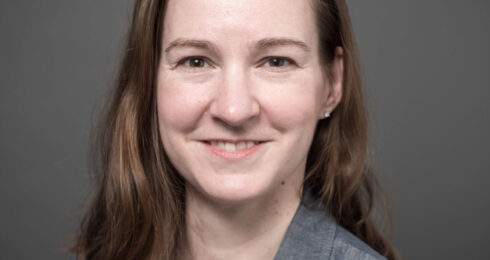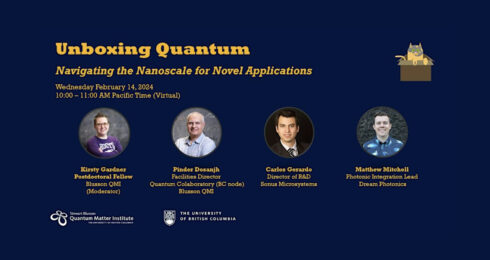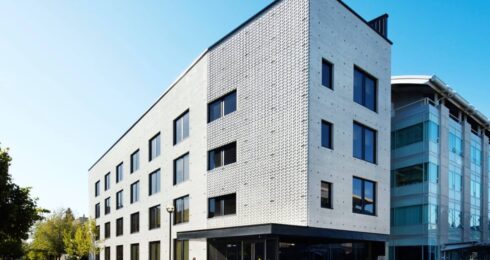Rob Kiefl is a Professor in the Department of Physics & Astronomy at the University of British Columbia (UBC), an Investigator at the Stewart Blusson Quantum Matter Institute (Blusson QMI), and an affiliate Scientist at Canada’s particle accelerator centre TRIUMF.

Image: Prof. Rob Kiefl, UBC Department of Physics & Astronomy, Blusson QMI, TRIUMF.
Kiefl is an expert in experimental condensed matter physics, particularly quantum materials and their interfaces. Most recently, his research has focused on understanding the novel magnetic and electronic properties of quantum materials using nuclear methods such as muon spin rotation (mSR) and beta-detected nuclear magnetic resonance (bNMR).
After obtaining his PhD from the University of British Columbia in 1982, Kiefl spent two years at the University of Zurich as a Postdoctoral Fellow. In 1984 he returned to Canada and began working as a Research Scientist at TRIUMF. He started at UBC in 1987 as a University Research Fellow and has been a full Professor since 1995 and an Investigator at Blusson QMI since its beginning.
Kiefl is widely recognized for his contributions to scientific research. He was an Associate of the Canadian Institute of Advanced Research (Superconductivity) from 1990 to 2013. He was awarded the Herzberg Medal by the Canadian Association of Physicists in 1992 and became a Fellow of the American Physical Society in 2005.
In 2017, he was awarded the prestigious Yamazaki Prize by the International Society for mSR Spectroscopy(ISMS). The prize, awarded every three years, recognizes outstanding and sustained work in µSR science with long-term impact on scientific and/or technical µSR applications. Kiefl received the prize for his development and use of μSR and b-NMR in condensed matter physics. His contributions to the field have had a significant impact on a wide range of topics, including muonium in semiconductors, exotic superconductors and magnets and most recently, developments in beta-NMR at TRIUMF for use in studying electronic and magnetic properties of thin films and interfaces.
“At the beginning of my career, I worked mostly on developing and applying new methods to study muonium in semiconductors – particularly high transverse field muon spin rotation and level crossing resonance spectroscopy. The electronic structure of muonium is almost identical to that of hydrogen but is much easier to study than hydrogen, which is an important impurity in most semiconductors.”
The discovery of high-temperature superconductivity in the late 1980s caused a dramatic shift in the direction of his research and the path of many others doing muSR. The muon was immediately recognized as a sensitive local probe for exploring the novel properties of this new collective state of matter.
Since 2000, Kiefl’s research has focused on using radioactive nuclei to probe thin films and interfaces. This change in direction happened when Alan Astbury (TRIUMF director at the time) approached Kiefl about potential applications for TRIUMF’s Isotope Separator and Accelerator facility (ISAC) in the area of condensed matter physics. This collective effort by Kiefl and other collaborators led to the building of a unique world-class b-NMR facility here at TRIUMF.
“It has been a thrilling experience, and I am very grateful for being a part of TRIUMF and Blusson QMI at UBC,” Kiefl said.
Kiefl retires from UBC and his position at Blusson QMI this year.
The content used in this piece has been partially extracted from an earlier interview by TRIUMF here.


